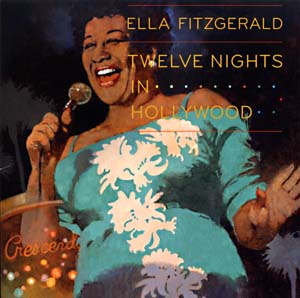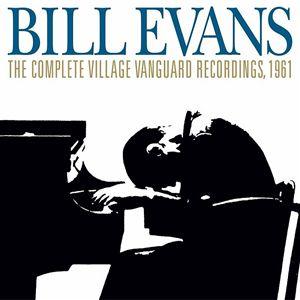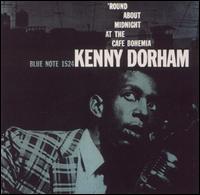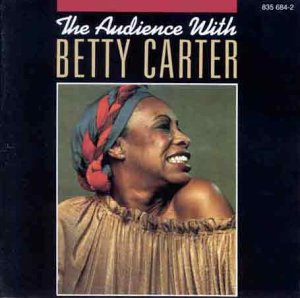
30) Eric Dolphy – Live at the Five Spot, Volumes 1 & 2
Recorded in July, 1961 at the Five Spot Café, New York City, NY
Very little evidence remains of one of the most remarkable partnerships in the history of avant garde jazz. Multi-instrumentalist Eric Dolphy and the young virtuoso trumpeter, Booker Little, are represented together on just three recordings, spanning seven months. On the studio albums Far Cry and Out There, the two hornmen move beyond the conventions of bop, into realms of increasing freedom and harmonic complexity. As an alternative to the dissonant sounds of Ornette Coleman’s pioneering quartet, which was active around the same time, these albums showcase work of unexpected grace and fragility, demonstrating that “the New Thing” could contain playing of non-traditional beauty.
However, Dolphy and Little’s famous two-week summer residency at The Five Spot, accompanied by the venerable rhythm section of pianist and composer Mal Waldron, bassist Richard Davis, and drummer Ed Blackwell, is where their true collaborative potential is finally revealed. Although both volumes document only one night of their residency, these recordings capture the group in peak form. Dolphy’s gushing improvisations – astringent bleating on the alto saxophone, deep yawning on the bass clarinet- contrast with Booker’s golden tone, inherited from the late Clifford Brown. The group works through six, extended original compositions and one standard, “Like Someone in Love”, where the source material is pulled and shaped like molten glass into something unrecognizable.
One final note for newcomers to these recordings. New York was so hot and humid in the days leading up to this recording date that the piano is jarringly out-of-tune. As a consequence, Waldron’s commanding solos and off-center comping have a strange quality that somehow portends the atonality that would be introduced into the music over the next five years. Booker Little wouldn’t live to see those developments; three months after these recordings were made, he died of kidney failure.

29) The Modern Jazz Quartet – The Complete Last Concert
Recorded in November, 1974 at Avery Fisher Hall, New York, NY
At the time of this concert, the MJQ’s last performance before an eight-year hiatus, its members – pianist John Lewis, bassist Percy Heath, drummer Connie Kay, and the “Wizard of the Vibes”, Milt Jackson – had been playing together for twenty years. Although the group was often derided by jazz critics as being pretentious and bland (playing what former drummer Kenny Clarke called “eighteenth century chamber music”) the reality was altogether different. If the MJQ presented themselves as sophisticated and urbane, these qualities reflected their focus on the quality and integrity of their music, rather than on the excesses of performance art.
John Lewis, the nominal leader of the MJQ, pioneered what is known as “third-stream music”, a progressive combination of jazz harmonies and rhythms with compositional elements of Western classical music, and he was as comfortable with bebop as he was with Bach. On The Complete Last Concert, the group plays to its influences before an adoring audience, performing elegant versions of songs by Gershwin, Gillespie, and Monk, before expanding the program with their own material (the lovely “Django” and “Skating in Central Park”), and an eleven-minute performance of Joaquin Rodrigo’s “Concierto de Aranjuez”. The concert setting – Avery Fisher Hall at Lincoln Center, the home of the New York Philharmonic – somehow seems the perfect place for these musicians to make their final curtain call.

28) Dexter Gordon – Homecoming
Recorded in 1976 at the Village Vanguard, New York City, NY
“There was so much love and elation… After the last set, they’d turn on the lights and nobody would move.”
-Dexter Gordon, regarding his Homecoming residency at the Village Vanguard
After 15 years of living as a musical expatriate in Europe, the great tenor saxophonist Dexter Gordon came home for good in 1976. Although he had been one the best-loved leaders of the bebop era, his sojourn had diminished his standing with American audiences. He returned as a musician more obscure and less central to the music than when he had left.
All of that changed with Dexter’s residency at New York’s most important jazz club, the storied Village Vanguard. Columbia’s two-disc recording of Gordon playing with trumpeter Woody Shaw and his group captures a senior musician reasserting his eminence over the nascent jazz scene. Gordon sounds masterful as he propels his way over and across ten tracks, his commanding sound prototypical to his instrument. The selection of the notable tenor standard, “Body and Soul” as the last song of the set must have been intentional; with it, Gordon places himself in a grand lineage with Coleman Hawkins, the first great tenorist and the man who altered the course of jazz improvisation with his legendary recording of the song in 1939.

27) Ella Fitzgerald – Twelve Nights in Hollywood
Recorded in May, 1961 and June, 1962 at the Crescendo Club, Los Angeles, CA
Ella was frequently at her best in concert, and the two dozen or so live recordings in her discography demonstrate the consistency with which she was able to charm audiences with her effortlessly cool performances. If other singers performed the same material with more feeling, no other singer ever performed with such an elite combination of perfect pitch, flawless intonation, and crystal-clear diction. She also approached her work with professionalism unmatched by her contemporaries, and this endeared her to audiences. If Billie Holiday was a tragic figure, Sarah Vaughn a demanding diva, and Anita O’Day a tough, road-hardened junkie, then Ella Fitzgerald was always an icon of congeniality and girlish charisma.
Of her live recordings, this four-disc set released by Verve Records in 2009 finds the singer at her mature best. In 1961 and 1962, she was right in the middle of her famous Songbook recordings for Norman Granz, and her performances at the Crescendo Club capture all of the warmth and bright humor of those records. The difference, for me, is that Twelve Nights records Ella with a small group, instead of with her usual orchestral backing. As a result, it is possible to hear her with a clarity that brings her performance a pleasing immediacy and depth. Her self-effacing spoken introductions show how this master entertainer, who early in her career was deemed too homely to be a lead vocalist, could utterly command an audience.

26) Michel Petrucciani – Solo Live
Recorded in February, 1997 in Frankfort, Germany
Michel Petrucciani’s life and his body of work deserve more space in writing than I can allow here. A French jazz pianist who suffered from a bone disease that stunted his growth and quickened his life span, Petrucciani was also an extraordinarily gifted performer who idolized Duke Ellington and played with something like Keith Jarrett’s technical range. This recording, released after Pettruciani’s death in 1999, is a document of special emotional power. His melodies are endlessly listenable as he communicates in passages that are alternately dazzling and sublimely beautiful. Petrucciani’s star seems destined to rise posthumously, as often happens to jazz musicians, and this concert recording may one day be considered among the most essential of post-modern jazz recordings.

25) Charles Mingus – Mingus at Antibes
Recorded in July, 1960 at the Jazz a Juan Festival, Juan-le-Pins, France
The fiery performance by the Charles Mingus Quintet at the Jazz a Juan Festival has undoubtedly stood out in the memories of those who were there to hear it live. Mingus’ Africanized brand of boisterous and discordant music, replete with blustering horns (Ted Curson, Booker Ervin, and Eric Dolphy), vocal shouts, charging tempos, and Mingus’ own thundering bass lines rocked the small festival situated in the breezy warmth of the Cote d’Azur. The recording of that performance is preserved in the exciting album Mingus at Antibes, released years later, after the leader’s death. The set opens with “Wednesday Night Prayer Meeting” from the Blues & Roots album, and closes with “Better Get Hit in Your Soul”, immortalized on Mingus Ah Um. Bud Powell guests on the one standard, “I’ll Remember April”, and his presence may be considered the orthodox calm in the middle of the storm of noise and energy the group whips up around him. Vital music.

24) Rahsaan Roland Kirk – Bright Moments
Recorded in June, 1973 at Keystone Korner, San Francisco, CA
Where to place Rahsaan Roland Kirk within the pantheon of jazz history? Like Albert Ayler, Kirk often played a whimsical, sing-song brand of avant-garde jazz, and his multi-instrumentalism brings a quality to his performances that often recalls the wildness and gimmickry of street performers. At other times, Kirk’s music can seem downright conventional, full of references to Dixieland and Swing music, genres that Kirk seems to hold genuine affection for. Finally, Kirk was something of a pop artist later in his career, working with artists like Quincy Jones on a catalogue of fusion-funk music that edged perilously close to the contemporary work of smooth jazz artists like Grover Washington.
The truth is that there was room in Rahsaan Roland Kirk’s vocabulary for all of the above. The blind soloist-leader also embraced poetry, philosophy, and the tenets of the Black Power movement. He played and recorded prolifically, going so far as to make his own instruments (the “black mystery pipes” that appear on some of his records are fashioned from a garden hose), and salvaging his technique even after a stroke partially paralyzed him. Kirk was simply a man with lots to say to those willing to embrace his polymath artistry.
Bright Moments is a two-disc set recorded by Kirk and his working group at his favorite venue, the intimate Keystone Korner Jazz Club. Kirk is jubilant, and the recorded performance, spanning two nights, is infused with his humor and ecstatic spirit. The songs, while not conventional in structure, are very enjoyable on an almost childish level. Full of shouts, sparkling chimes, and the keening sounds of saxophones, flutes, and stritches, hearing these songs is akin to listening to favorite Christmas songs pulled through a vortex into the wilds of old New Orleans. The overall effect is magical, and the live audience is clearly loving it.

23) Cecil Taylor – Nefertiti, the Beautiful One Has Come
Recorded in November, 1962 at the Café Montmarte, Copenhagen, Denmark
I experienced an epiphany while listening to Cecil Taylor’s music very late one night. I had always struggled with aspects of avant-garde jazz, until I learned to stop listening for melody and conventional form in the music, and instead think abstractedly of its shape, and how it moved over time. While listening to Taylor’s Conquistador!, for example, I pictured rain falling on a forested hillside, hearing Taylor’s scattered atonal notes and the horn players’ lithe solos as drops and rivulets against the din of percussion. At other times, I pictured the music ink falling on paper, or used Taylor’s own analogy that his style captured the motion of a dancer leaping in mid-air.
Listening to Nefertiti, the Beautiful One Has Come has always recalled a heavy storm at sea. Contextually, this is the only recording to document Taylor between 1961 and 1966, a formative time for him and his corps. The Penguin Jazz Guide, reviewing the album, refers to the alto saxophonist Jimmy Lyons as “a man caught in a squall, and fighting his way through it and over it”, and this visualization, for me, represents this music perfectly. Taylor’s flurries of notes fall percussively, relentlessly, like driving rain. Every few minutes, Lyons charges through the tempest with hard, twisting solos that either punch right through or turn back on themselves. Andrew Cyrille doesn’t play a steady beat, but creates an unstoppable, concussive rhythm with snare and cymbals, propelling the music forward like a boat riding a storm surge. This is very challenging music that will be difficult for listeners new to Cecil Taylor’s extreme style, but those who take the time to hear the movement and interplay in this music will be rewarded.

22) Joe Henderson – State of the Tenor, Volumes 1 & 2
Recorded in November, 1985 at the Village Vanguard, New York City, NY
Joe Henderson, known as “The Phantom”, was an elder statesman in jazz by the time these recordings were made. The tenor saxophonist first came to prominence in a series of explorative post-bop recordings for Blue Note Records in the sixties, but he had recorded infrequently in the intervening years. This session at the Village Vanguard, as its authoritative title would suggest, is something of a report on the resurgent state of acoustic jazz by a forgotten master.
Unlike Dexter Gordon, whose “comeback” album I discussed earlier in this post, Henderson’s place on the modern scene is not atop the mantle. He possesses a raw, introspective, slightly throttled sound on tenor, and the unpredictable tack of his solos are often compounded with terse, clipped harmonic statements that lend his playing a dark and elusive quality, as if he was a shadow or appropriately, a “phantom”.
On this two-disc set, Henderson plays with bassist Ron Carter and drummer Al Foster. The pianoless trio format recalls Sonny Rollins’ celebrated recordings at the same venue of decades earlier. Henderson here sounds just as direct, and if not as muscular, and the rhythm section lays back, allowing Henderson the spotlight. As the saxophonist painstakingly builds his solos over the intelligent bop programme, his authority as a major stylist becomes obvious. Henderson may well be the last word on the state of acoustic jazz in the 1980’s.

21) The Dave Brubeck Quartet – Jazz at Oberlin
Recorded in March, 1953 at Oberlin College, Lorain County, OH
Dave Brubeck passed away last week at the age of 91. I am happy to be able to recognize one of his most iconic works here. Jazz at Oberlin, recorded at a small liberal arts college in the Midwest, is a genuinely important recording in the popular history of jazz.
What follows is an account of the concert by Geoffrey Ward and Ken Burns of the concert and its aftermath, from the book Jazz: A History of America’s Music:
“…Snow blanketed Tappan Square in downtown Oberlin, Ohio, and the students headed for the big Romanesque-style chapel named for the abolitionist president of Oberlin College, Charles Grandison Finney, bundled against an icy wind. The Dave Brubeck Quartet was to appear there that evening, and as the concertgoers filed through the doors, stomping snow from their boots, slipping out of coats and scarves, settling into the yellow-oak pews, neither they nor the musicians waiting nervously backstage were quite sure how the evening would go. Jazz concerts on campuses were still relatively rare in the East, and Brubeck had been told he might find the audience in Finney Chapel especially unresponsive, since it was sure to include music students from the Oberlin Conservatory – serious musicians, he was warned, who ‘don’t understand jazz’.
“At Oberlin that evening, (the Dave Brubeck Quartet) outdid themselves. The audience- including the conservatory students- responded with ovation after ovation. The concert was recorded, and the album that resulted helped build enthusiasm for Brubeck. He was signed by Columbia, the nation’s biggest label…. And soon found himself the leader of the most popular jazz group in the country.”








































